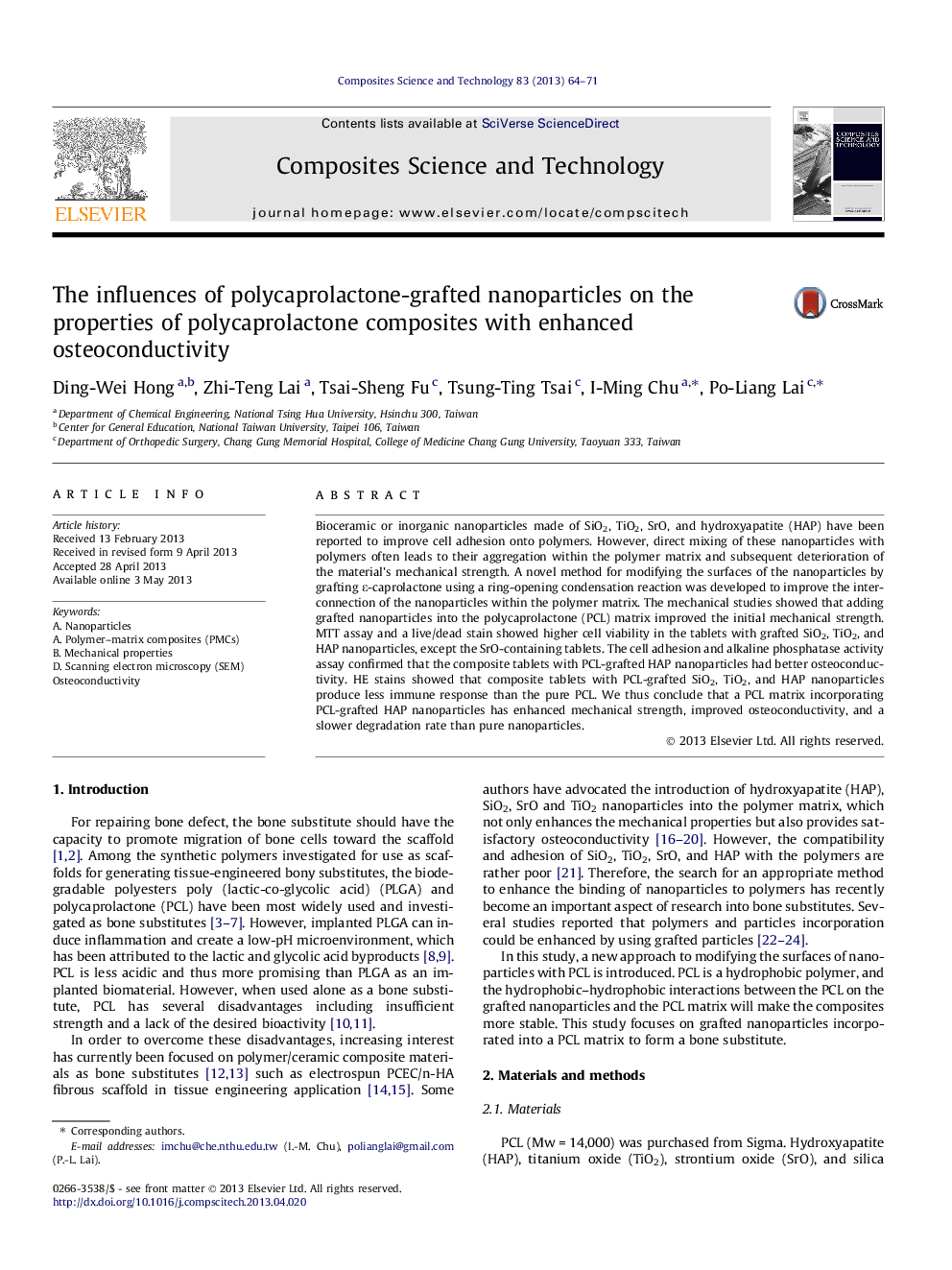| Article ID | Journal | Published Year | Pages | File Type |
|---|---|---|---|---|
| 7215975 | Composites Science and Technology | 2013 | 8 Pages |
Abstract
Bioceramic or inorganic nanoparticles made of SiO2, TiO2, SrO, and hydroxyapatite (HAP) have been reported to improve cell adhesion onto polymers. However, direct mixing of these nanoparticles with polymers often leads to their aggregation within the polymer matrix and subsequent deterioration of the material's mechanical strength. A novel method for modifying the surfaces of the nanoparticles by grafting ε-caprolactone using a ring-opening condensation reaction was developed to improve the interconnection of the nanoparticles within the polymer matrix. The mechanical studies showed that adding grafted nanoparticles into the polycaprolactone (PCL) matrix improved the initial mechanical strength. MTT assay and a live/dead stain showed higher cell viability in the tablets with grafted SiO2, TiO2, and HAP nanoparticles, except the SrO-containing tablets. The cell adhesion and alkaline phosphatase activity assay confirmed that the composite tablets with PCL-grafted HAP nanoparticles had better osteoconductivity. HE stains showed that composite tablets with PCL-grafted SiO2, TiO2, and HAP nanoparticles produce less immune response than the pure PCL. We thus conclude that a PCL matrix incorporating PCL-grafted HAP nanoparticles has enhanced mechanical strength, improved osteoconductivity, and a slower degradation rate than pure nanoparticles.
Keywords
Related Topics
Physical Sciences and Engineering
Engineering
Engineering (General)
Authors
Ding-Wei Hong, Zhi-Teng Lai, Tsai-Sheng Fu, Tsung-Ting Tsai, I-Ming Chu, Po-Liang Lai,
